Hello, fellow bonsai enthusiasts! Welcome back to our blog. Today, we’re embarking on an exciting journey into the world of Pomegranate, focusing our attention on the captivating Nijekan variety that has won the hearts of all who encounter it. So, grab your favorite beverage, get comfortable, and allow us to accompany you through the year-round adventure of nurturing your own pomegranate bonsai masterpiece.
Pomegranate (Nijekan) Bonsai Care Guide
Table of contents:
*click above to jump to the topic
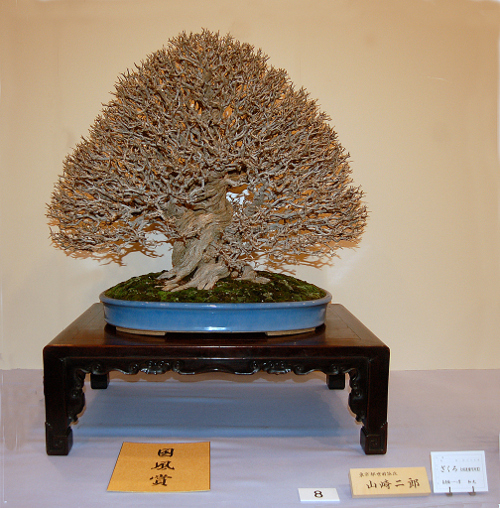
Introduction
The pomegranate, scientifically known as Punica granatum, is an enchanting deciduous tree or shrub that originates from the Mediterranean region. Interestingly, the pomegranate didn’t grace the soils of the United States until the era of Spanish colonization. While it’s most commonly associated with its succulent fruits and vibrant juices, the pomegranate also boasts its own charm as a bonsai specimen. Hailing from the Mediterranean, these trees are equipped to thrive in warm climates, where they can withstand even the most scorching heat when planted directly in the ground. However, for potted pomegranate bonsai trees, a little shade is advisable when temperatures exceed 100 degrees to protect the delicate foliage from scorching.
Among the various pomegranate varieties, the Nijekan variety stands out with its distinctive allure. The hallmark twisted trunk is a natural marvel, with the twist becoming more pronounced as the tree matures. This elegant twist isn’t the result of human intervention but rather an exquisite creation of nature. The Nijekan variety is renowned for its vigorous growth, so much so that planting it in the ground and then attempting to collect it can lead to a cascade of new shoots sprouting exuberantly – it’s a tree that doesn’t shy away from asserting itself! Pomegranate trees can tolerate hard water, although opting for cleaner water is always a preferable choice. Nonetheless, it’s important to note that pomegranates are less tolerant of cold weather. For those residing in northern regions, safeguarding your bonsai within a greenhouse during winter is a wise approach. Drawing from my experience in California’s Central Valley, characterized by a Mediterranean climate, I’ve observed pomegranates thriving without the need for fungicides or pesticides.
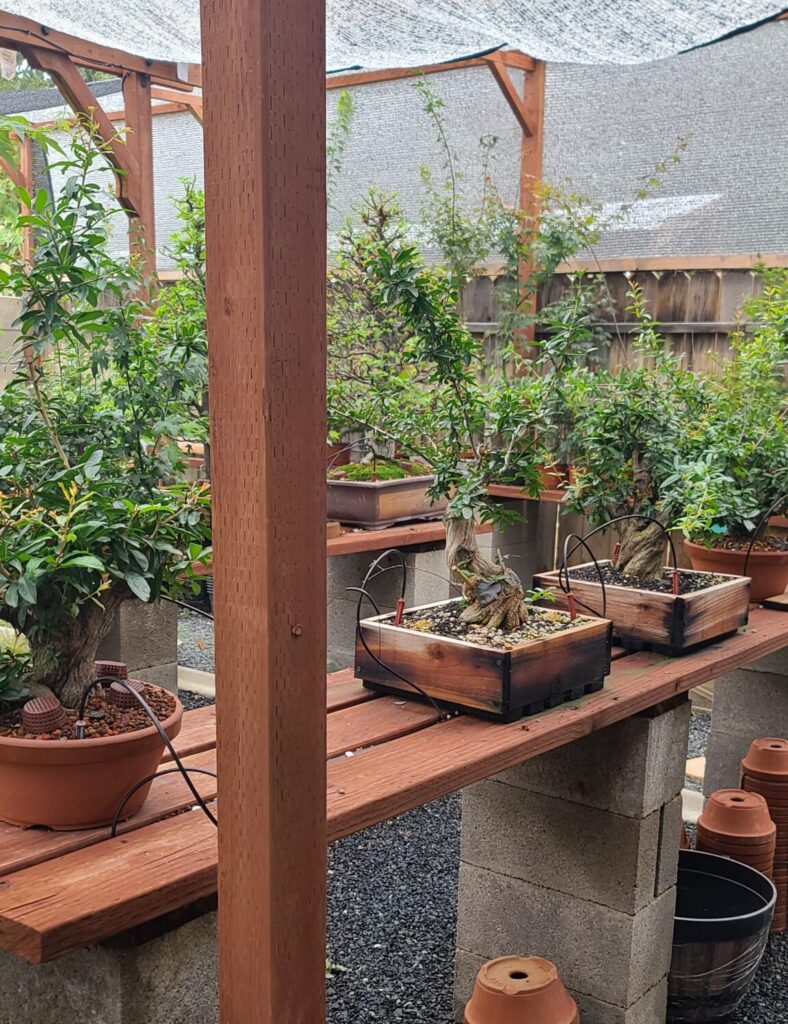
Spring
Fertilizing: Pomegranate bonsai are vigorous growers, responding eagerly to fertilization. During the development phase, applying fertilizer from spring through fall is beneficial. However, for trees in refinement, it’s prudent to withhold fertilization until growth has hardened after late spring or early summer defoliation.
Repotting: In my region, I opt for repotting pomegranate bonsai in February, just before bud swelling. For young or developing trees, barerooting is feasible during repotting, allowing up to 50% of root removal. Conversely, for refined trees, it’s advisable to retain the root ball and encourage lateral root growth.
Soil Mixture: When pursuing trunk thickening in developing trees, a basic potting mix suffices. Pomegranates aren’t finicky about soil. However, for trees with established branches or those in refinement, I recommend a blend of 2 parts Akadama and 1 part Pumice. For wet climates, a mix of 2 parts Akadama, 1 part Pumice, and 1 part lava rock offers improved drainage.
Watering: Pomegranate bonsai have a healthy appetite for water. As a general guideline, water when the top layer of soil becomes dry. For detailed watering insights, refer to our previous post on watering deciduous trees.
Pest and Disease: During the blossoming spring, I minimize spraying unless absolutely necessary, especially when fresh buds awaken from dormancy.
Pruning and Styling: While repotting is an excellent time for pruning, avoid disturbing pomegranates once new growth has commenced.
Wiring: Late winter, before the emergence of buds and foliage, is the opportune moment for wiring pomegranates.
Cuttings: Any pruned branches can be planted in pots, with a remarkable 90% chance of successful sprouting. For optimal results, enhance humidity by covering cuttings with plastic or placing them in a greenhouse.
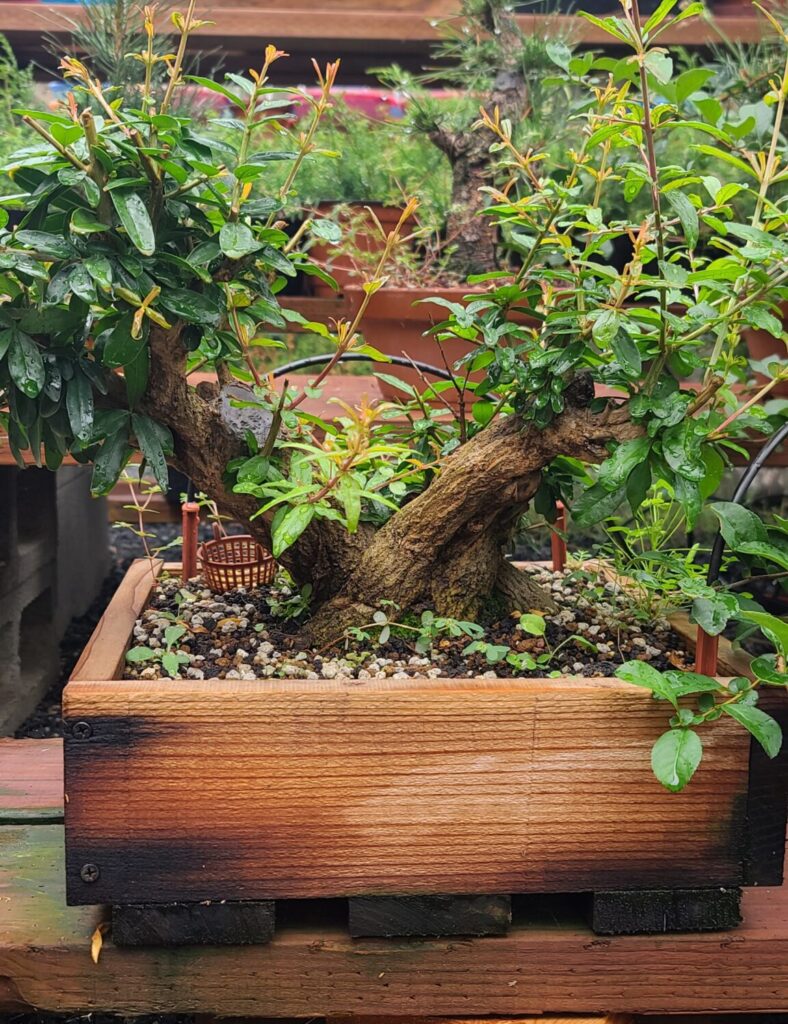
Summer
Fertilizing: Continue fertilizing developing trees, while refined trees benefit from post-defoliation fertilization once new shoots have hardened.
Watering: With increasing demand, adequate watering remains crucial. Following our earlier guide on watering deciduous trees will serve you well.
Pest and Disease: In hot, dry climates, pomegranates thrive and are naturally resistant to many pests and diseases. However, regions less suited for pomegranates might encounter issues like Peach Leaf Curl.
Pruning and Styling: Late spring or early summer is ideal for defoliating healthy pomegranate bonsai. Vibrant signs of vigorous growth, shoot extension, and lush foliage indicate the opportune moment for defoliation. Follow up with a cutback if growth permits, and consider a second defoliation for highly vigorous trees (exercise caution with refined trees). Avoid defoliating during scorching months, as pomegranates are sensitive to excessive sun exposure after defoliation.
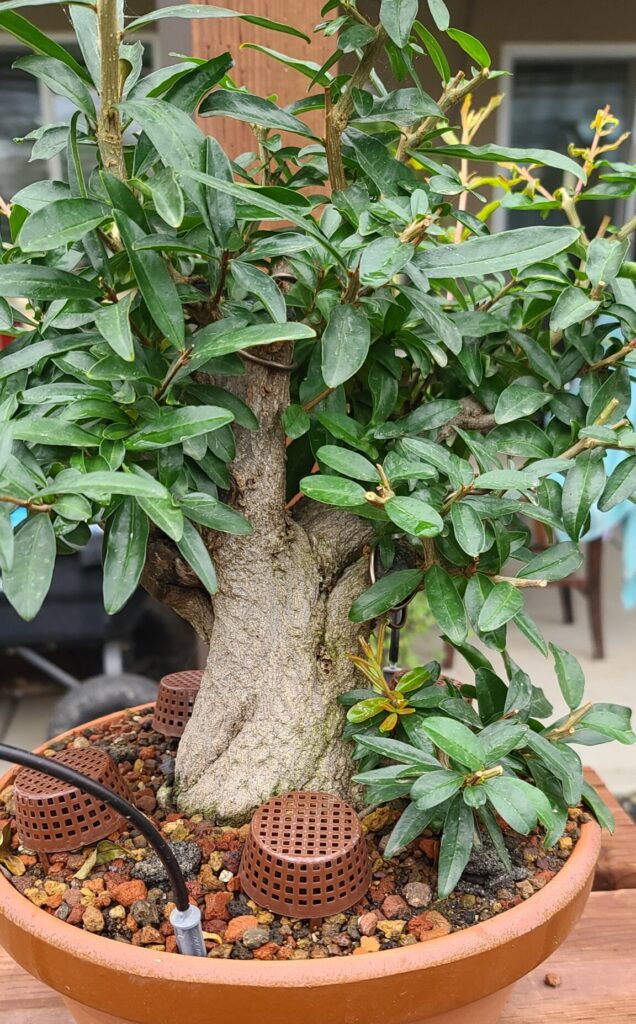
Wiring: Following defoliation, which generally occurs in late spring or early summer, is an opportune time for wiring your pomegranate.
Fall
Fertilizing: The fall months are pivotal for applying fertilizer, priming the tree for dormancy.
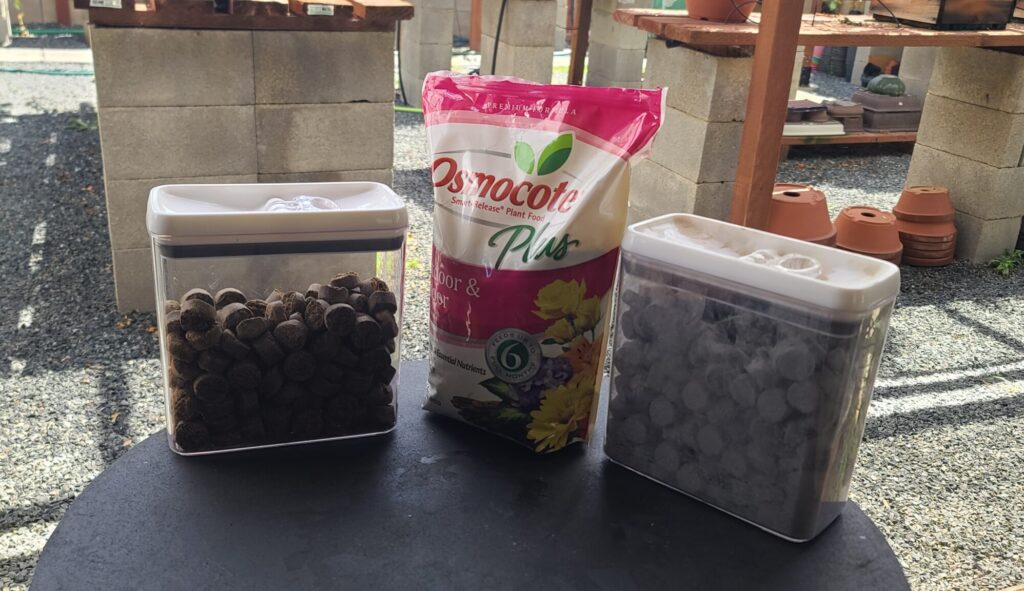
Watering: Maintain the familiar watering routine—check the top layer of soil and water if dry.
Pest and Disease: Limited spraying is advisable in winter, unless specific issues arise.
Pruning and Styling: As leaves prepare to drop, some pomegranates may produce one final burst of growth. Allow this energy-absorbing process to occur naturally. Once leaves have fallen, embark on a silhouette refinement or cutback.
Wiring: With leaves absent, winter provides an excellent window for wiring, as branches are more accessible.
Winter
Watering: During the wet winter months, daily checks of both tree and soil are essential. In my experience, a weekly watering routine suffices for winter.
Pest and Disease: Winter offers an ideal opportunity for applying Lime Sulfur or Copper Spray. This treatment resets pest cycles and serves as an effective fungicide.
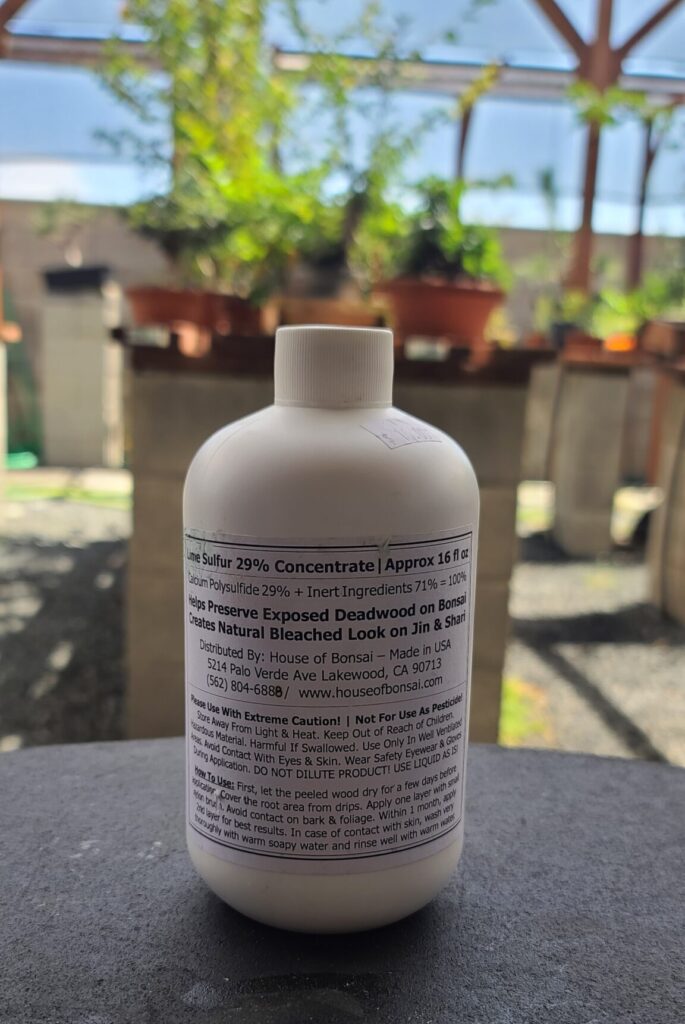
Pruning and Styling: While this period is conducive to minor pruning, avoid major cuts. Focus on silhouette refinement.
Wiring: Winter, with its leafless branches, is a prime time for wiring pomegranates, thanks to the absence of foliage.
Thank you for joining us until the end. Remember to explore our bonsai calendar page, a valuable resource for your bonsai journey. May your bonsai endeavors be fulfilling and prosperous. Happy bonsai cultivation!